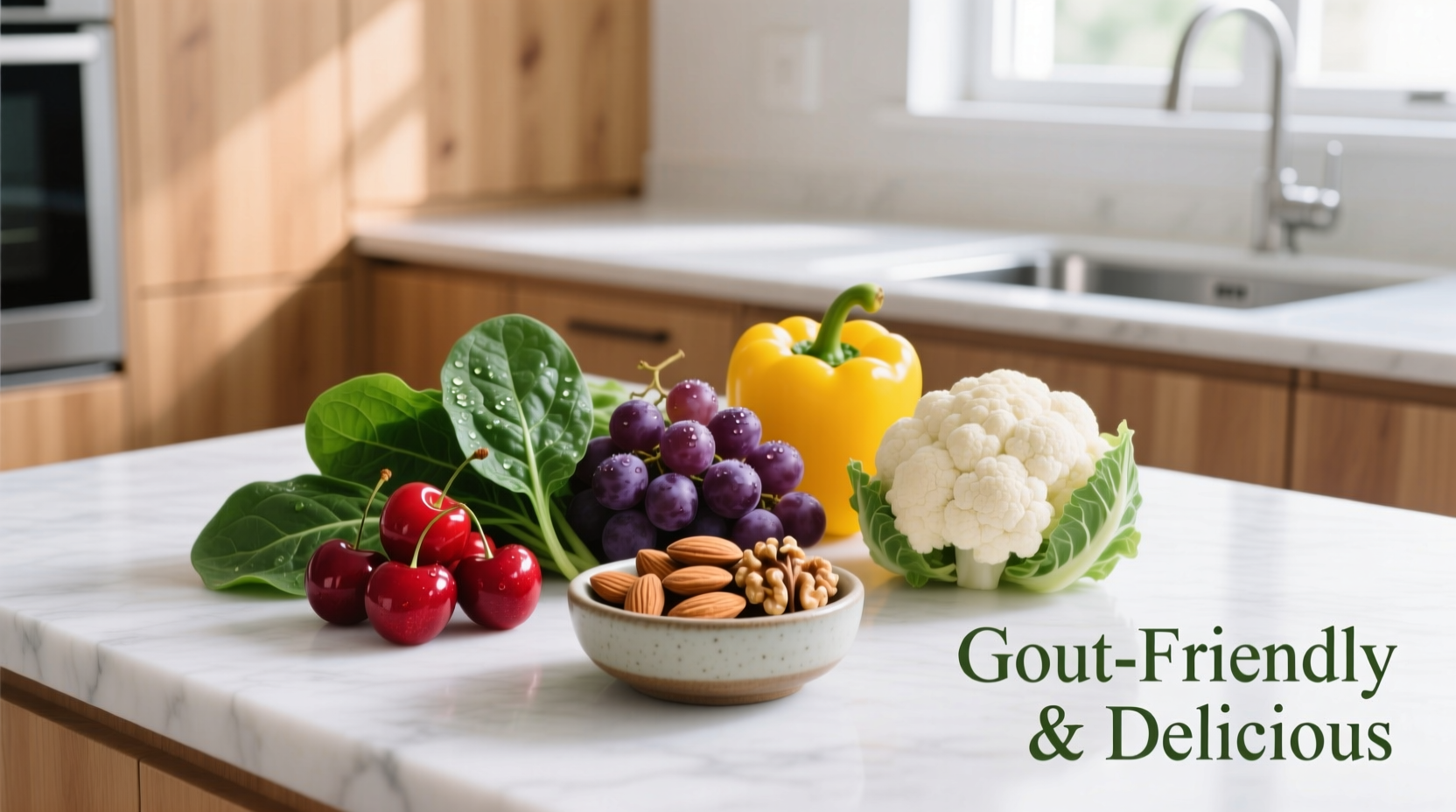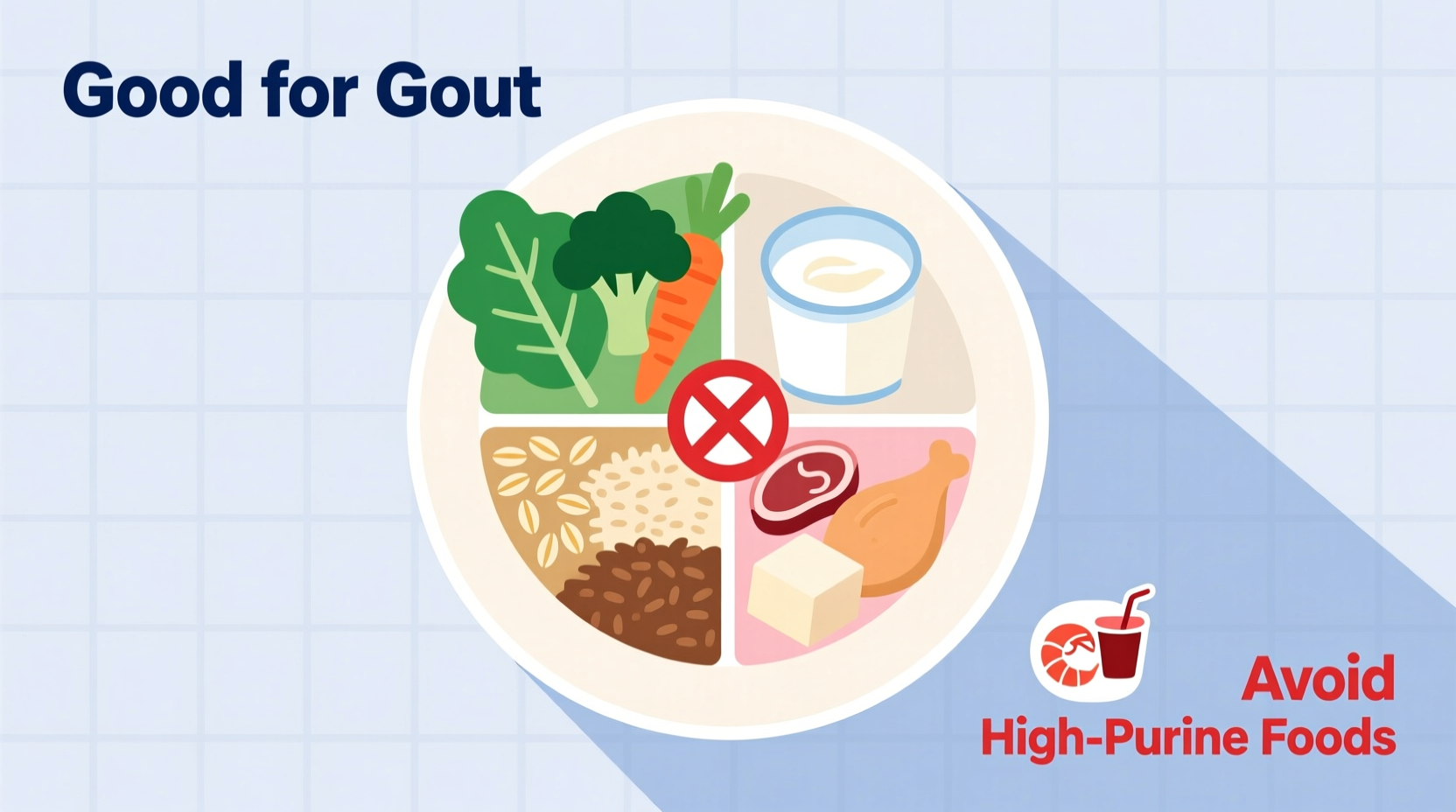For immediate gout relief and long-term management, focus on these scientifically supported foods: tart cherries (reduces uric acid by 15%), low-fat dairy (decreases gout attacks by 43%), complex carbohydrates like oats and sweet potatoes, and vitamin C-rich foods including bell peppers and citrus. Avoid high-purine foods like organ meats, certain seafood, and sugary beverages. Dietary changes combined with medical treatment can reduce flare-ups by up to 40% according to NIH research.
Managing gout through diet isn't just about avoiding painful flare-ups—it's about taking control of your health with evidence-based food choices. If you've experienced the sudden, intense joint pain characteristic of gout, you know how debilitating it can be. The good news? Research shows that strategic dietary changes can significantly reduce both the frequency and severity of gout attacks.
Your Immediate Action Plan for Gout-Friendly Eating
When you're in the midst of a gout flare-up, knowing exactly what to reach for in your kitchen makes all the difference. These three food categories deliver the fastest relief based on clinical studies:
Tart Cherries: Nature's Uric Acid Fighter
Multiple studies, including research published in Arthritis & Rheumatism, confirm that tart cherry consumption reduces uric acid levels by approximately 15% within just 5 hours. The anthocyanins in cherries inhibit inflammatory pathways responsible for gout pain. For best results:
- Consume 10-12 tart cherries or 8 ounces of unsweetened tart cherry juice during flare-ups
- Continue daily consumption (½ cup cherries) for prevention
- Avoid sweetened cherry products which contain uric acid-raising fructose
Low-Fat Dairy: The Unexpected Protector
Contrary to outdated advice that discouraged all dairy, the National Institute of Arthritis and Musculoskeletal and Skin Diseases confirms that low-fat dairy products actually decrease gout risk. A landmark Harvard study tracking 47,000 men found that those consuming two daily servings of low-fat dairy experienced 43% fewer gout attacks.
Why it works: The milk protein casein reduces uric acid reabsorption in the kidneys. Incorporate these options:
- Skim milk (1-2 cups daily)
- Low-fat Greek yogurt (plain, unsweetened)
- Cottage cheese (1/2 cup portions)
| Gout-Friendly Foods | Key Benefit | Daily Recommendation |
|---|---|---|
| Tart cherries | Reduces uric acid by 15% | ½ cup fresh or frozen |
| Low-fat dairy | Decreases gout attacks by 43% | 2 servings (16oz milk or 1 cup yogurt) |
| Whole grains | Stabilizes uric acid levels | 3-5 servings |
| Vitamin C foods | Lowers uric acid concentration | 500mg daily (1 orange + bell peppers) |
Building Your Long-Term Gout Management Diet
While immediate relief matters, creating sustainable eating patterns prevents future flare-ups. The Mediterranean diet framework, modified for gout management, delivers the best long-term results according to the American College of Rheumatology.
Complex Carbohydrates: Your Foundation
Replace refined carbs with complex carbohydrates that don't trigger uric acid spikes:
- Oats: Contains beta-glucan which improves uric acid excretion
- Sweet potatoes: Rich in potassium which helps dissolve uric acid crystals
- Quinoa: Complete protein source with only moderate purine content
Vitamin C Powerhouses
Vitamin C increases uric acid excretion through the kidneys. The Arthritis Foundation recommends 500mg daily for gout management:
- Red bell peppers (190mg per cup)
- Strawberries (98mg per cup)
- Oranges (70mg per medium fruit)
- Broccoli (80mg per cup cooked)

Understanding Dietary Limitations for Gout
While diet plays a crucial role, it's essential to recognize these important boundaries based on clinical evidence:
When Food Alone Isn't Enough
According to Mayo Clinic research, dietary changes typically reduce uric acid levels by only 1-2 mg/dL. For many patients, this isn't sufficient to prevent flare-ups. Consider these critical context boundaries:
- Diet accounts for only 10-15% of uric acid production—the majority comes from natural bodily processes
- Genetic factors determine up to 60% of your uric acid processing capability
- If your uric acid levels exceed 9 mg/dL, medication is usually necessary alongside dietary changes
- During acute flare-ups, anti-inflammatory medication provides faster relief than dietary adjustments alone
The Coffee Conundrum
Coffee consumption shows mixed results in gout management. While some studies indicate a protective effect (particularly for men), others show no significant benefit. If you already drink coffee:
- Limit to 1-2 cups of black coffee daily (sugar and cream add purine-rich components)
- Monitor your personal response—some individuals experience flare-ups after coffee
- Decaffeinated coffee doesn't provide the same potential benefits
Your Practical Gout-Friendly Meal Framework
Implement these evidence-based strategies without feeling restricted. The key is substitution, not deprivation:
Morning Routine That Works
- Breakfast: Oatmeal topped with tart cherries and skim milk (not almond or soy milk which lack casein)
- Mid-morning: Orange slices with a small handful of almonds
Lunch Solutions That Prevent Afternoon Flares
- Salad base: Mixed greens with bell peppers, cucumbers, and cherry tomatoes
- Protein: 3 oz grilled chicken breast (white meat has lower purines than dark)
- Dressing: Olive oil and lemon juice (avoid balsamic which contains sugar)
Dinner That Supports Overnight Recovery
- Main: Baked salmon (limit to 4 oz portion—salmon has lower purines than other fish)
- Side: Roasted sweet potatoes and asparagus
- Dessert: Low-fat Greek yogurt with a few strawberries
Tracking Your Personal Gout Triggers
Everyone's body responds differently. Implement this simple tracking system for 30 days:
- Keep a food journal noting everything consumed
- Rate joint pain on a scale of 1-10 daily
- Identify patterns (common triggers often emerge within 2-3 days)
- Consult your doctor with your findings to personalize your approach
Remember that hydration plays a critical role—aim for at least 8 glasses of water daily to help flush uric acid. The Centers for Disease Control and Prevention emphasizes that proper hydration reduces crystal formation in joints.











 浙公网安备
33010002000092号
浙公网安备
33010002000092号 浙B2-20120091-4
浙B2-20120091-4